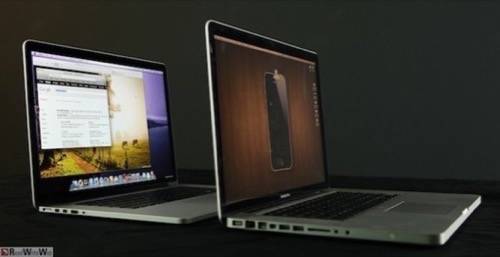
Only Apple could get away with charging a $400 premium for a feature that no one needs, few people will notice, doesn’t work with most apps, and was not on anyone’s wish list until the company announced it last month.
Apple’s ultra high-resolution Retina display may be a valuable innovation on the iPhone and iPad – but it’s a solution in search of a problem on the MacBook Pro. Until Apple unveiled the new machine at its World Wide Developers Conference (WWDC) in June, no one thought the resolution on current MacBook Pros was insufficient.
“This is certainly not a product feature; it’s a marketing feature, and it’s not a compelling one when you consider all the other decisions that have to go into the overall choice [of a PC] that a consumer makes,” says James McQuivey, analyst for Forrester Research.
“Until you saw it, you didn’t know you wanted it,” adds Frank Gillett, another Forrester Research analyst.
Now that it’s here, though, it’s being hailed as a significant breakthrough, the new standard for laptop screens. But many analysts still argue that most people won’t even notice the difference between a Retina display and a standard MacBook Pro screen.

What Retina Costs
Buying a MacBook Pro with Retina means shelling out at least $2,199 for a notebook with a 15.4-inch, 2880×1800 display. Top-end models approach $3,500!
By comparison, the cheapest 15-inch MacBook Pro starts at $1,799, with half the resolution and a different but roughly comparable set of features and specifications. (The Retina version is smaller and lighter but lacks a DVD drive, and uses expensive Flash storage instead of a slower conventional hard drive.)
The problem is that most websites, images and third-party software don’t support the Retina’s additional resolution. While Apple has rewritten its software to look and perform great with the Retina MacBook, it’s a crapshoot how other software interfaces will look.
The same holds true for most Web images. Because Web graphics are of much lower resolution than a Retina display, they’re unlikely to offer the impressive detail Apple promises. In fact, many images and even text could look slightly worse on the Retina Display, because no Web browsers other than Apple Safari support Retina technology.
That may change eventually. Observers compare the new technology to the introduction of high-definition TVs. For the majority of people, standard-definition TV shows and DVDs looked the same – or even worse – on the new HDTVs, so return rates were high. That changed only when more HD programming became available and when directors learned to adjust lighting and cameras to take full advantage of the higher resolution.
No one knows when or if a similar transition will occur for high-resolution computer screens. (Find high-resolution Retina-ready wallpapers here.)
What Retina Means for Apple
Launching an expensive upgrade in an unprepared market would mean certain failure for most computer makers. But Apple has shown the ability to turn new features into virtual “must-haves,” even if they’re not really needed.
Apple made display quality a major differentiator starting with the iPhone 4, which was the first to get a Retina display. The company later added the technology to the iPad.
With all these products, rather than focus on resolution and number of pixels, Apple cleverly directed attention to the name. Retina implies quality in ways that a bunch of numbers can’t. “It’s clear to me that Apple understands that what they’re selling people is a very beautiful, very elegant screen,” McQuivey says.
Setting a Standard
Long term, Apple is attempting to use the new MacBook Pro to set a standard for quality that people will demand from other PC makers.
If that happens, Apple would be sitting pretty. The company has long-term contracts with manufacturers for high-resolution screens, reducing the available supply to competitors. As a result, rivals will likely have to wait a year or more for capacity to increase and prices to come down. And “when a company can ship high-margin products in a niche that competitors are still trying to figure out, those competitors rarely ever catch up,” says Carl Howe, analyst for the Yankee Group.
Apple is likely to invest lots of money marketing its Retina MacBook Pros. Strong sales will encourage developers to build websites and software that support the technology. “If Apple wants to drop a couple of billion dollars into making a technology happen, they can do it,” says Martin Reynolds, a Gartner analyst. “They’ve got enough business and enough growth that they can pay it off pretty quickly.”
That’s a good plan for Apple, but most consumers would be better off waiting until the Retina technology becomes less expensive and better able to actually deliver a higher-quality experience in real-world applications.










